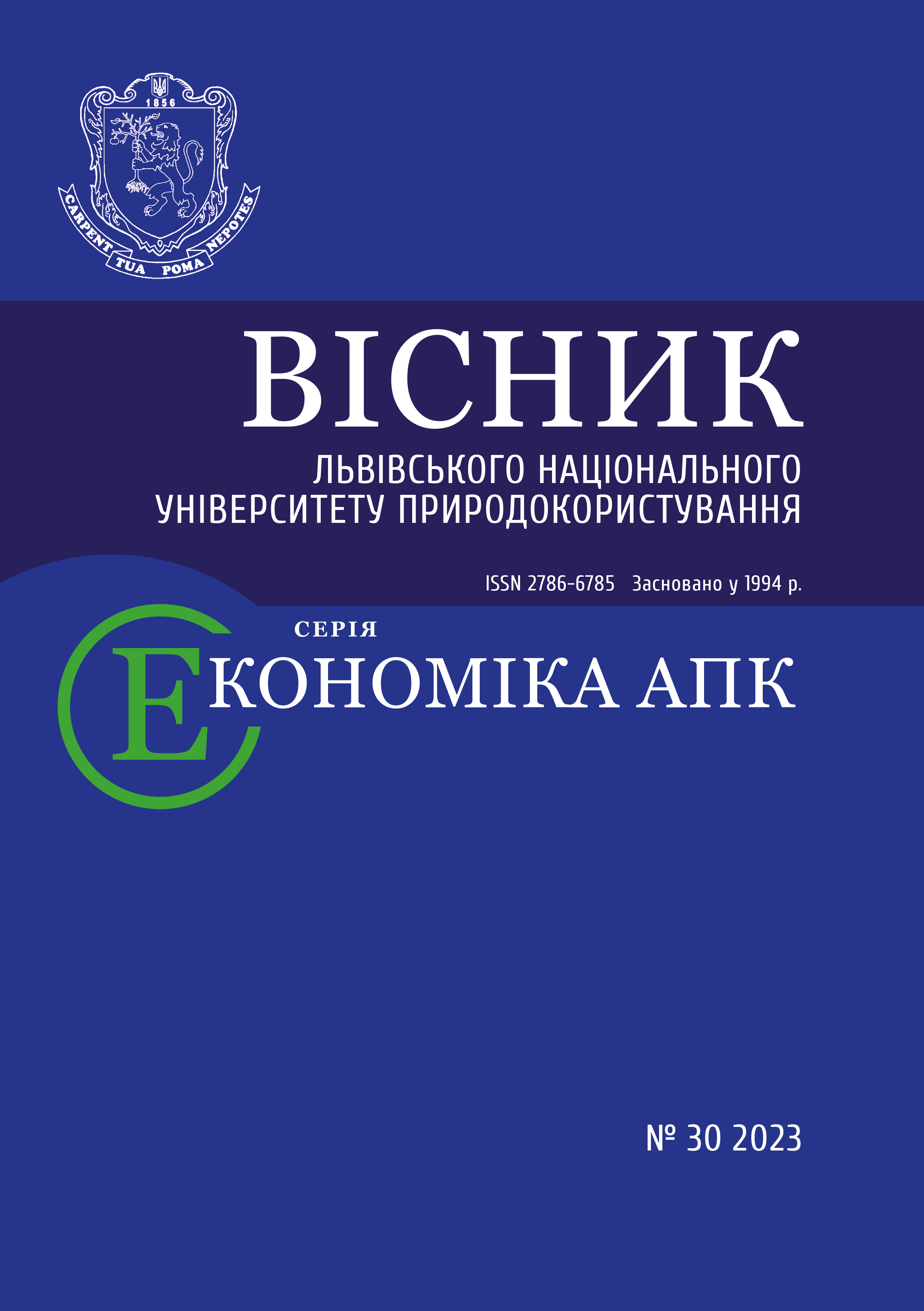USE OF MODELING METHODS IN FORECASTING THE ENVIRONMENTAL CONDITIONS
DOI:
https://doi.org/10.31734/economics2023.30.094Keywords:
ecosystem, modeling, mathematical modeling, forecasting of conditions, simulation modelingAbstract
The growing importance of ecological modeling as one of the means to make forecast of the impact on environment is associated with increased burden on it. Considering complexity of the theoretical basis of many modeling methods and the difficulty of practical application of the research findings, it is necessary to employ modeling methods to compare results and allow for their correction. Today, the main place among forecasting methods is occupied by modeling methods.
Modeling of the environmental conditions is a tool that allows moving from a qualitative level of analysis to a level that involves quantitative statistical values.
The most important type of modeling is mathematical modeling, i.e. when an object is studied by using a model developed applying various mathematical methods. Any mathematical model that describes complex processes apparently relies on simplifications. Different hierarchical decision-making levels require mathematical models with different levels of detail.
Mathematical models with a sufficient degree of reliability help to determine the trends of ecological process progress with a slow evolutionary process of development. However, disturbances that occur and affect the course of these processes are often accompanied by a jump-like development of events. In fact, simulation models are used to display them.
The use of mathematical modeling methods and computer-based technologies provide significant increase of the efficiency of solving various tasks that require complex calculation procedures and the use of a powerful computing resource.
Methods of mathematical modeling are particularly important for environmental management and forecasting. Modeling ecological objects can be challenging, as they cannot be crearly mathematically described. However, due to powerful computers and software tools, it is now possible to solve environmental issues.
References
Klymenko M. O., Pryshchepa A. M., Vozniuk N. M. Environmental monitoring. Kyiv: Akademiia, 2006. 360 p.
Kucherov K. I. Modern scientific research methods for assessing and forecasting the impact of man-made pollution on the safe functioning of the natural environment. Man and environment. Problems of neoecology. 2008. No 1–2. P. 104–112.
Lavryk V. I. Methods of mathematical modeling in ecology. Kyiv: Fitosotsiotsentr, 1998. 131 p.
Lavryk V. I. Modeling and forecasting the environmental conditions: a textbook for universities. Kyiv: Akademiia, 2010. 397 p.
Liashenko I. M., Korobova M. V., Horitsyna I. A. Modeling of economic, ecological and social processes: a study guide. Kyiv: «Kyiv University» VOC, 2010. 320 p.
Principles of modeling and forecasting in ecology: textbook / V. V. Bohoboiashchyi, K. R. Churbanov, P. B. Palii, V. M. Shmandii. Kyiv: Center of educational literature, 2004. 216 p.


